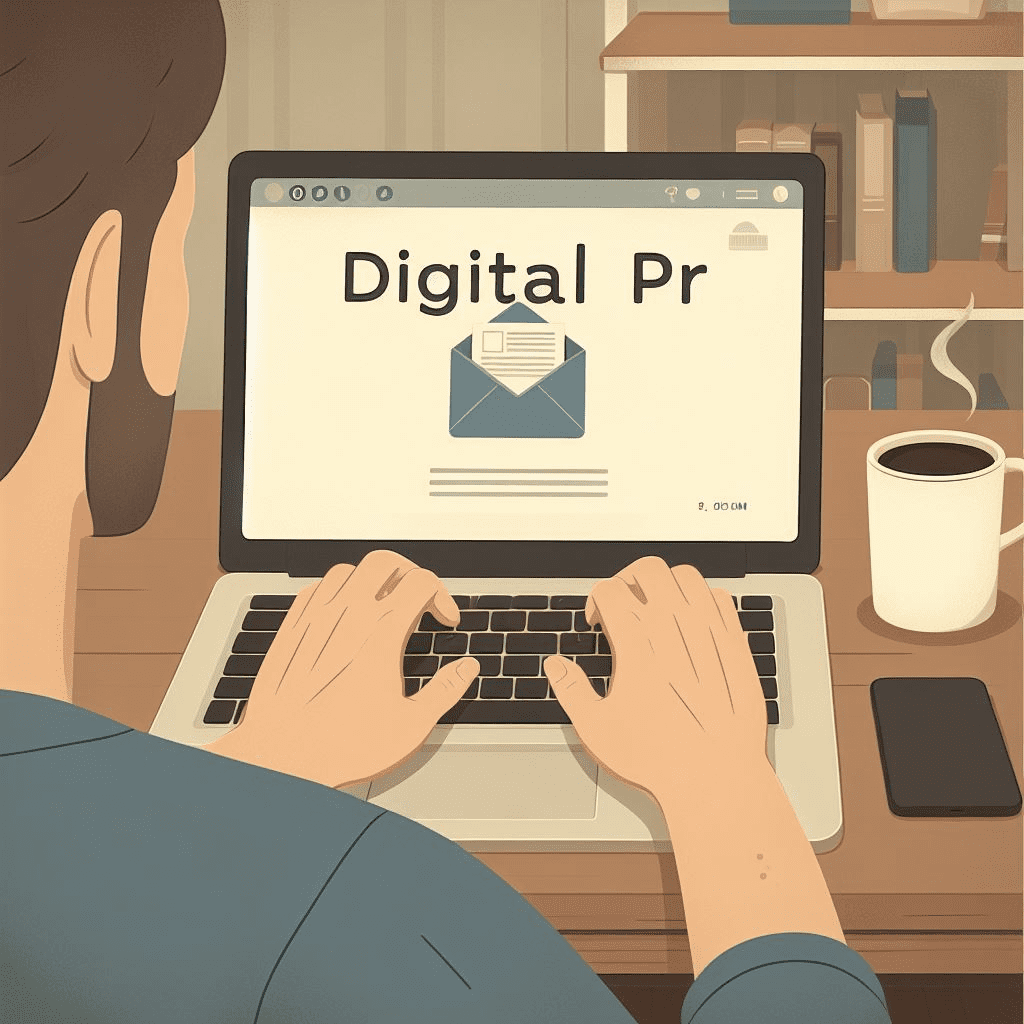So you’ve gathered all of the information for your digital PR campaign and turned it into a press release. You’re ready to send it out – so it’s time to create a pitch email.
Crafting an engaging email to journalists is arguably the most important part of the process – after all, it’s the vehicle for your press release and it decides whether a journalist considers your story or disregards it completely.
With that in mind, here is our 10-step process to crafting a pitch email that will boost your chances of piquing your target journalist’s interest.
1. Identify relevant journalists to contact
It can be tempting to gather as many contacts as possible and spam out your release to hundreds of journalists, but this approach is a surefire way to rapidly burn bridges. A huge number of journalists receive irrelevant pitch emails in their inboxes every day, and if you’re one of them then you’re likely to be marked as spam or even blocked as a sender.
Take the time to research publications and applicable journalists who are likely to be interested in your story. PR tools can be helpful in some cases, but you can also do your research the old-fashioned way to find out what journalists are writing about, the stories they’re interested in and how to contact them.
2. Ensure your pitch is newsworthy
If your press release is about a new product your company has released or your CEO announcing a new investment, it’s unlikely that journalists are going to be interested unless you are doing PR for Disney or Google. In other words, your pitch should present new information to the journalist which incentivises them to share it themselves.
For example, if you have gathered original data and pulled it into a series of insights that are controversial, funny, unusual or evoke any other type of emotion, then you’re in with a chance of success with your pitch. Don’t just rely on your data to tell the story, though – you also want to present it in an exciting way that will get the recipient of your email eager to find out more.
3. Think of multiple angles
You will no doubt have come up with the ‘straight’ or ‘obvious’ angle for your press release but think about other ways the information could be packaged up and presented to different publications. For example, if you were a smartphone company who had found that 70% of your customers were using voice search daily, you could send the ‘straight angle’ to mainstream tech publications but then work to repackage the story.
If you can dig into the data and find out, for example, that 60% of these customers are women, you can pitch women’s lifestyle publications with a headline indicating that women are more tech savvy as they are embracing voice technology more quickly than men. If the data shows that voice search is used more in the morning, more commonly in the north of the UK, primarily to get food recommendations…all this data can be pulled out to create different headlines.
4. Keep your subject line short
Journalists want to scan their emails and understand what they’re reading immediately. Creating a long-winded subject line which doesn’t fit on mobile devices and trails off without summarising any of the key facts will not engage the recipient. In fact, they’re more likely to delete the email without opening it, or leave it festering in their inbox while they look at more interesting content.
As a rule of thumb, mobile inboxes will commonly cut off subject lines at about 30 characters. This means you need to front-load your information to get the most eye-catching statistics in there first.
- 60% of voice searchers are fem…
- Pitch: New study reveals that…
Which one would you open?
5. Focus on the figures
Including figures in your press release ensures that information is more easily digestible and engages emotions. Think of the number of times you have clicked on a headline with shocking figures – the same applies for press releases. You are essentially selling your story to the journalist, so make sure they’re so intrigued that they will want to share the information with readers.
Some good examples of figures include percentages, costs and numerical hooks.
- Percentages: ‘60% of voice searchers are female’
- Costs: ‘Women spend £200 a month on clothes’
- Numerical hooks: ‘1 in 3 women hate dark chocolate’
6. Personalise your opening lines
Writing a press release which opens with ‘To whom it may concern’, ‘Dear Sir or Madam’ or simply ‘Hey there’, is not going to persuade the journalist that you’ve put adequate effort into your pitch. It’s the same rule that applies to writing a cover letter for a job application – finding the name of the hiring manager and including it in your opening address will earn you brownie points as it becomes clear you’ve done your homework.
Beyond the opening, you can add further personal detail depending on your knowledge of the journalist or your existing relationship with them. They may have written about you before – so remind them of the coverage. Perhaps you loved their recent, relevant coverage of a topic, in which case you can link to it and share your thoughts. Personalisation takes time, but it’s never a waste of time.
7. Summarise the juiciest highlights
Just as the journalist will only merit your subject line with a cursory glance, the same applies for the main body of the press release. If they are presented with swathes of text to wade through, they’ll disregard it or bookmark it for later – then probably never get around to it, or forget about it.
Ensure your press release is structured in the same way as a news article – lead with a summary of the main and most interesting insights, then follow up with secondary insights, contextual information and end with a quote. Otherwise, the journalist will be left waiting for you to get to the point – which isn’t a good position to put them in.
8. Consider offering an exclusive
There’s one thing journalists love more than a juicy story, and that’s a juicy exclusive. Knowing they’ll get hot information before anyone else, and they’ve been picked above competitors, provides journalists with an ego boost and an increased incentive to publish the press release.
If you’re really keen on getting a backlink from a major publication, consider offering the story as an exclusive, then following up if you don’t get a reply. To ensure you can still send out the story if your journalist doesn’t engage, include a caveat in your follow-up such as: ‘If I don’t hear back from you in 7 days, I will assume you’re not interested and pass the story on to other outlets.’
9. Don’t forget the CTA
Your press release should have a clear direction to it, beyond the highlights you will have neatly summarised. Before signing off, you want to encourage the journalist to take action – for example, you may provide initial information in the release, and request that the journalist contacts you if they want full details.
Ensure you provide clear contact information for any follow-ups. This is also when you should consider linking to a press pack if you have one, as it can provide further credibility for your brand.
10. Craft a polite follow-up
It’s rare that a journalist will directly reply to you, as they will either publish your press release directly or not engage at all. If the latter is the case, don’t be afraid to craft a polite follow-up which asks the journalist if they were interested in the story, or would like further information.
The journalist may have lost the email in their inbox, forgotten about it but still be interested in it, or never have seen it in the first place – in which case, a follow up will ensure your press release is bumped to the top of their inbox. Don’t overdo it though – more than two follow-ups is likely to irritate the journalist.
Need help with your digital PR?
If you need help with creating digital PR campaigns or crafting the perfect pitch email, get in touch with us today and we’ll see how we can be of assistance.
We can also provide you expert insights into your digital strategy overall when you book a Free Acquisitions Workshop. During the workshop you can receive detailed advice from our experienced marketers, a personalised action plan, and free resources to maintain your strategy’s performance.












